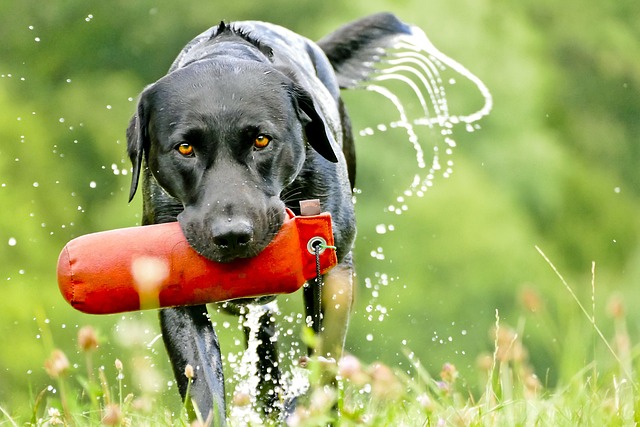
How long does it take to train a dog 1 command?
Dreaming of the moment your dog sits on command or stays put while you answer the door? Training your furry pal is like building a secret language, but one question lingers: how long will it take?
There’s nothing quite like watching your dog bounding back with a toy in its mouth, tail wagging like a propeller. Teaching your dog to retrieve isn’t just a party trick—it’s a bonding experience that taps into their natural instincts. But it takes patience, treats, and a sprinkle of understanding of both your dog’s personality and local pet guidelines.
Every retrieval journey starts with curiosity. Grab a soft toy your dog loves—squeaky toys often work like magic. Show it to them, let them sniff and paw at it. In your backyard or an enclosed space (where leash laws don’t apply), gently toss the toy a short distance. Watch closely—even if they just look at it, that’s the first step. Remember, some public parks require toys to be clean and non-hazardous, so pick wisely.
Positive reinforcement is the name of the game. When your dog shows interest in the toy, shower them with praise. A hearty “good boy/girl!” paired with a tiny treat can turn a hesitant pooch into an eager learner. But don’t push too hard. If your dog seems overwhelmed, take a break. After all, training should feel like playtime, not homework.
 Once your dog approaches the toy, the real fun begins. Encourage them to pick it up. You might need to nudge the toy towards their mouth or use a command like “take it.” When they finally grasp it, reward immediately. In many regions, training your dog basic commands isn’t just fun—it aligns with responsible pet ownership standards, ensuring they’re well-behaved in public spaces.
Once your dog approaches the toy, the real fun begins. Encourage them to pick it up. You might need to nudge the toy towards their mouth or use a command like “take it.” When they finally grasp it, reward immediately. In many regions, training your dog basic commands isn’t just fun—it aligns with responsible pet ownership standards, ensuring they’re well-behaved in public spaces.
Getting your dog to bring the toy back can be tricky. Try crouching down, patting your legs, and calling their name. If they start walking towards you, cheer them on. Some dogs might drop the toy halfway—if that happens, don’t scold. Instead, offer another treat when they get closer, rewarding each small victory. Just like following local waste disposal rules, consistency in training builds trust.
Advanced training involves teaching “drop it” or “give.” Hold a treat in front of your dog’s nose while they have the toy. Once they open their mouth to get the treat, say the command clearly. With practice, they’ll learn to release items on cue. Keep in mind, certain community events or dog sports might require your dog to master these skills, so it’s a win-win for both of you.
Teaching your dog to retrieve is a journey filled with laughter, treats, and lots of tail wags. Whether it’s fetching a slipper from under the couch or bringing back a ball at the park, these moments strengthen your bond. Just as you follow leash laws and vaccination schedules, investing time in training shows your commitment to a happy, well-behaved furry friend.

Dreaming of the moment your dog sits on command or stays put while you answer the door? Training your furry pal is like building a secret language, but one question lingers: how long will it take?

Housebreaking your furry friend isn't just about keeping your floors clean—it's a game-changer for both of you. Think about it: no more late-night dashes in the rain, no embarrassing surprises when guests visit.

Ever feel like you're speaking a different language when trying to teach your dog "sit" or discourage counter surfing? You might reward with a treat one minute, then ignore jumping the next

Taking your dog on car rides can be a blast—whether it’s a trip to the dog park, a weekend getaway, or just a quick errand. But in the Western world,

Taking your dog on car rides can be a blast—whether it’s a trip to the dog park, a weekend getaway, or just a quick errand. But in the Western world,

Taking your dog on car rides can be a blast—whether it’s a trip to the dog park, a weekend getaway, or just a quick errand. But in the Western world,